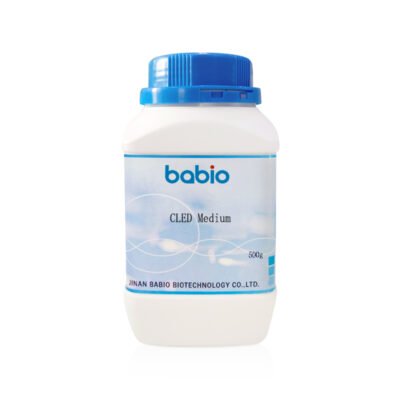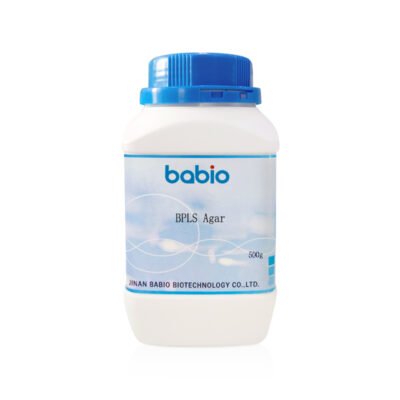Description
Phenylalanine Agar serves as a critical culture medium designed for differentiating Enterobacteria. This medium allows microbiologists to identify bacterial species through the oxidative deamination of phenylalanine into phenylpyruvic acid.
Key Features
- Growth Environment: The medium contains 3.0 g/L yeast extract, 1.0 g/L L-phenylalanine, 5.0 g/L sodium chloride, 1.0 g/L dipotassium phosphate, and 12.0 g/L agar. This composition creates an optimal environment for bacterial growth, supporting various microbial studies.
- Visual Indicators: After incubation, researchers add 0.2 mL of a 10% ferric chloride solution. A green color indicates a positive reaction, signaling the presence of phenylpyruvic acid. This visual cue streamlines the identification process, enhancing efficiency in the lab.
- Simple Preparation: Prepare the medium by suspending 22 g in one liter of distilled water. Heat the solution until it boils, then sterilize it at 121℃ for 15 minutes. Pour the mixture into slanted test tubes for effective incubation.
Quality Control and Storage
Store Phenylalanine Agar in a tightly capped container at temperatures between 5-30°C. This dehydrated medium has a shelf life of 3 years. Once prepared, keep it at 2-8°C, away from direct light, to maintain its efficacy.
Conclusion
Phenylalanine Agar offers a reliable and efficient means to differentiate Enterobacteria. Its straightforward preparation and clear visual indicators make it an indispensable tool in microbiological research.

-1.jpg)
-3.jpg)
-2.jpg)
-1-150x150.jpg)
-3-150x150.jpg)
-2-150x150.jpg)
Hektoen-Enteric-AgarHE-1-400x400.jpg)


Reviews
There are no reviews yet.